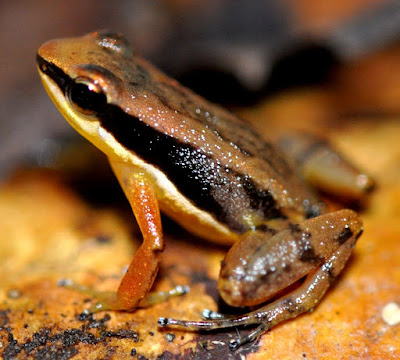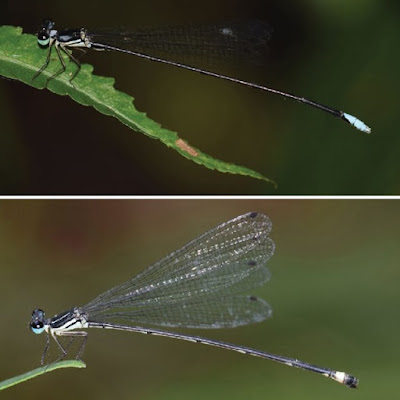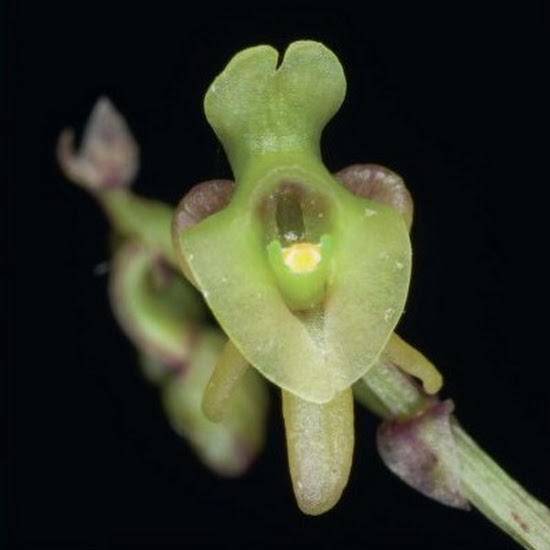![]() |
Aster tonglingensis G.J. Zhang & T.G. Gao
in Zhang, Hu, Gao, Gilbert & Jin, 2019. |
Abstract
Narrowly lanceolate leaves occur frequently in the genus Aster. It was often employed as a distinguishing character in the taxonomy of this genus. The origin of this particular leaf shape, however, has never been investigated using comparative methods. In this study, we reconstructed a comprehensive phylogeny that includes most species of Aster with narrowly lanceolate leaf. We then gathered data on riparian habitats and the presence or absence of narrowly lanceolate leaves, and investigated the evolutionary association between them in a phylogenetic context. Our analysis indicated that the species with narrowly lanceolate leaves are nested in unrelated lineages of the genus Aster, implying that they originated independently several times. Using Pagel’s comparative method of discrete data, we demonstrated a significant correlation between riparian habitats and narrowly lanceolate leaves. We further inferred the sequence of transition of the two characters. This analysis indicated that the sequence of evolution of riparian habitat and narrowly lanceolate leaf form was usually uncertain, but some positive results showed that the occurrence of riparian habitats may not precede the evolution of narrowly lanceolate leaf form. This study provided new insights into the adaptive evolution in a mega-diverse family. In addition, Aster tonglingensis, an unexpected new species with narrowly lanceolate leaves, was discovered and established based on the evidence from morphology, micromorphology and molecular phylogeny.
![]() |
Figure 3: Habitat and morphology of Aster tonglingensis.
(A) Aster tonglingensis growing in its riparian habitat; (B) inflorescence; (C) capitula and phyllaries; (D) disc florets; (E) cauline leaves and axillary capitula; (F) seedling. |
![]() |
| Figure 4: Aster tonglingensis. (A) habit; (B) capitula; (C) phyllaries; (D) bristle of pappus; (E) ray florets; (F) style branches of ray florets; (G) disc florets; (H) style branches of disc florets; (I) anthers. |
Aster tonglingensis G.J. Zhang & T.G. Gao, sp. nov.
Type: CHINA. Zhejiang Province, Wencheng County, Mt. Tongling, elev. 640 m, 2nd Sept. 2013, H. H. Hu 331-1 (holotype PE!, isotype PE!).
Diagnosis: The new species superficially resembles Aster dolichophyllus Ling. Both species have narrowly lanceolate cauline leaves, recurved phyllary tips, and occur near streams. However, the phyllaries of Aster tonglingensis were 5–7-seriate, green (vs. 2–3-seriate, green with purple tip in A. dolichophyllus), capitula usually more than 30, both terminal and axillary (vs. less than 10, only terminal), adaxial surface of all leaves puberulent (vs. glabrous), basal leaves lanceolate, apex rounded or obtuse (vs. spatulate, apex acute), corolla of disc floret 5–7 mm, lobes half to two thirds as long as limb (vs. corolla 9–11 mm, lobes one third as long as limb), pappus whitish (vs. slightly brown).
...
Etymology: The species is named after its type locality, Mt. Tongling, Wencheng County, Zhejiang Province, China.
Conservation status: Aster tonglingensis is a very narrowly distributed species and is currently known only from one stream in Mt. Tongling Natural Reserve. A population with ca. 100 individuals was found along the stream. We scoured nearby places with similar habitats in this region but failed to find more populations. This part of the natural reserve currently is open to tourists. A footpath was built along this stream which passes through its location. The habitat of A. tonglingensis is easily disturbed or damaged. According to Criteria B2a of International Union for Conservation of Nature Red List Categories, this species should be treated as Critically Endangered. More attention and protection should be paid to this new but vulnerable species.
Conclusions:
Leaf shape has been used as an important character in the taxonomy of Aster for a long time (Chen, Brouillet & Semple, 2011). The relationship between it and the environment, however, has never been investigated. In the present study, a phylogeny including most species with narrowly lanceolate leaf in Aster was reconstruction based on three molecular markers. It was revealed that species with narrowly lanceolate leaves were placed in far related lineages of the genus Aster (Fig. 1). Thus, the narrowly lanceolate leaf shape originated independently several times in the genus Aster. It was the result of convergent evolution. Comparative analysis in the phylogenetic context revealed that narrowly lanceolate leaf shape and riparian habitat were strongly correlated. The transition order of riparian habitat and narrowly lanceolate leaf was shown to be usually uncertain. But the preadaptation of the narrowly lanceolate leaf was positively supported by some analysis (Fig. 2). In summary, convergent evolution and preadaptation may play important roles in the evolution of leaf shape in the genus Aster. Meanwhile, an unexpected new species with narrowly lanceolate leaves, Aster tonglingensis, was discovered and established based on the evidence of molecular, morphology and micro-morphology. This new species was descripted and illustrated here.
Asteraceae is the largest and relatively young plant family (Funk et al., 2009; Heywood, 2009). Simultaneously, members of this mega-diverse family show abundant morphological diversity (Funk et al., 2009). They occur in almost every corner of the earth and occupy various habitats (Funk et al., 2009), thus providing an excellent opportunity to study convergent evolution (Heywood, 2009). The present study provided new insights into the process of convergent evolution of leaf form in a big genus of this mega-diverse family. In turn, understanding more details of the convergent evolution in this family helped to discover the cryptic biodiversity before they go extinct, as shown in the unexpected discovery of the new species Aster tonglingensis in this study.
![]()
![]()
Guo-Jin Zhang, Hai-Hua Hu, Tian-Gang Gao, Michael G. Gilbert and Xiao-Feng Jin. 2019. Convergent Origin of the narrowly lanceolate leaf in the Genus
Aster—with Special Reference to An Unexpected Discovery of A New
Aster Species from East China.
PeerJ. 7:e6288. DOI:
10.7717/peerj.6288











































































